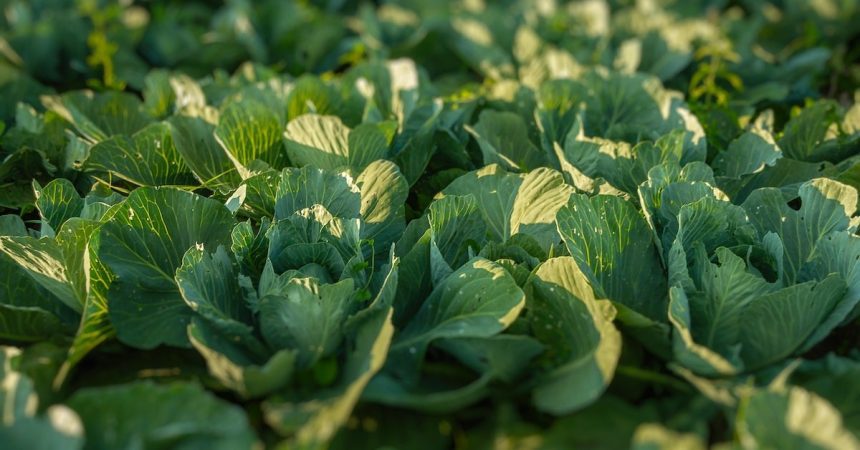Cabbage is a cool weather crop that is prone to pests like cabbage worms and diseases like clubroot. Thankfully, there are many great companion plants that can help ward off pests, attract beneficial insects, improve soil nutrients and more when planted near cabbage.
Why Grow Companion Plants?
Companion planting is the process of strategically planting different crops together so they can benefit one another. It dates back centuries and is a key practice of many organic gardeners today.
Companion planting with cabbage offers several potential benefits:
Pest Control
Certain plants can help repel cabbage pests like cabbage worms, aphids and flea beetles. Having these plants nearby tricks these insects into staying away.
Improving Growth
Some plants provide nutrients, shade, support or other effects that can improve the growth and yield of cabbage.
Attracting Beneficial Insects
Plants like pollinators and predators of cabbage pests can be drawn into your garden by specific floral companion plants.
Efficient Use of Space
You can maximize production in limited space by interplanting compatible vegetables, herbs and flowers together.
Best Companion Plants for Cabbage
Here are the top companion plant options to grow with cabbage:
Aromatic Herbs
- Chives
- Dill
- Sage
- Rosemary
- Thyme
- Hyssop
These herbs may help mask the scent of cabbage to pests with their own aromatic oils. Plus many produce flowers that attract tiny beneficial wasps that prey on cabbage worms and loopers. Cut back herbs before they go to seed.
Flowers
- Nasturtiums
- Calendulas
- Cosmos
- Bachelor’s Buttons
- Sweet Alyssum
- Snapdragons
Pretty flowering plants provide needed food sources for natural predators and pollinators. They also help brighten up the vegetable garden! Choose compact, non-vining varieties and deadhead spent blooms regularly.
Dynamic Accumulators
- Comfrey
- Yarrow
- Dandelions
- Chicory
- Nettles
The deep taproots of these plants draw up calcium, potassium, magnesium and other minerals from the soil depths. Chopping down mature accumulators nearby allows their mineral-rich leaves to compost around cabbage roots. Comfrey in particular makes an excellent mulch around cabbage.
Natural Pest Confusers
- Mint
- Garlic
- Onions/Chives
- Southernwood
- Wormwood
Intercropping cabbage with the strongly scented herbs listed can help obscure pests’ ability to find your cabbage plants. Onions and garlic may also deter cabbage moths. Mint spreads aggressively so plant it in a pot sunk into the garden instead.
Legumes
- Beans
- Peas
- Clover
Legumes have symbiotic relationships with nitrogen-fixing soil bacteria associated with their roots. This helps them draw ample nitrogen from the air and deposit it into the earth through their roots and fallen leaves and vines. Extra nitrogen supports better yields for cabbage grown after legumes.
Physical Supports
- Dill
- Pole beans
Tall, upright plants like dill and pole bean teepees can provide needed structural support and shading for cabbage in summer heat. Just be sure to give cabbage enough room to grow massive heads.
Companion Planting cabbage Guild Example
Here is an example of an ideal cabbage companion planting guild and layout:
Surrounding Plants:
- Dill – 2
- Sage – 2
- Chives – 2
- Carrots – 10
- Beets – 5
- Bush Beans – 5
Nearby Plants:
- Marigolds – 3
- basil – 2
- oregano – 2
- Garlic – 5
- Wormwood – 2
Key:
- Cabbage – 5 plants
- Dill – provides shelter from sun
- Carrots & beets – break up soil
- Beans – fix nitrogen
- Sage, chives, marigold – deter pests
- Garlic, wormwood – pest confusing
This sample guild offers the cabbage crop support, pest protection, soil enrichment and good airflow. Feel free to adjust numbers and species based on your specific garden size and needs!
Companion Planting Methods
Once you’ve selected suitable companion plants for your cabbage crop, it’s time to incorporate them into your garden layout.
Here are some effective methods to try:
Intersperse
Scatter different plants randomly among the cabbages. Examples are beets, onions, carrots, dill, and lettuce. Taller plants like dill should be far enough away to avoid shading small cabbage seedlings.
Border
Plant marigolds, nasturtiums, and thyme around the edges of the cabbage beds. These plants create a colorful border and release protective aromas. Include flowering plants like buckwheat or calendula along the edges to attract pollinators and predatory insects.
Trap Cropping
Use plants like arugula and collard greens that grow faster than cabbages. These plants will attract insect pests away from the slower-growing cabbages. You can remove these trap crops once the cabbages are established, or leave them to support beneficial insects.
Vertical Support
Grow pole beans or vines like sunflowers and sorghum along the north-facing edge of the cabbage beds, about 3-4 feet away. These tall plants will climb above the cabbages and provide shade. The beans also add nitrogen to the soil and stabilize minerals with their deep roots.
Cut Flowers
Don’t forget to add flowering plants for color, beneficial insect habitat and pest control. Snip blooms for summery cut flower bouquets. Cabbages prefer lower temperatures, so removing nearby hot-colored flowers helps keep beds cooler.
Cosmos, zinnias, calendula, statice, dianthus and clipped dill flowers all make charming companions suitable for mixed bouquets with kale or other ornamental cabbage relatives.
When to Plant Cabbage Companions
It’s ideal to grow quick growing companion plants like radishes, lettuces and spinach a few weeks before slower developing cabbage starts. These can be harvested before the spreading cabbage leaves take over the bed space.
Slower-growing companion plants like dill and carrots can be sown around the same time as the cabbage crop. Time mid-summer planted companions like beans and beets to mature and be harvested before autumn frosts halt cabbage growth.
Perennial herbs make great permanent companion plants for cabbage since they come back reliably each year.
Companion Planting Tips & Tricks
Follow these handy tips to maximize success with cabbage companion planting:
Give Roots Room
Aim to space cabbage plants 2-3 feet apart. This prevents excessive crowding of both leaves and roots. Be mindful of subsurface needs for companions too. Deep-rooted carrots, beets and parsnips prefer wider rows.
Time It Right
Fast-and-slow combinations work well by using sequential maturation rates efficiently. Otherwise, one species may get overwhelmed. Know growth rates and stagger plantings accordingly.
Keep Off Extra Nitrogen
Cabbage needs less nitrogen fertilization when legumes are present. Tone down high-nitrogen amendments to prevent excessive foliage growth at the expense of proper head formation.
Leave Some Bare Patches
As beneficial as companion plants are, native predatory insects need some open areas to hunt, warm up and transition between plants. Striking this habitat balance is key.
Consider Shading Needs
Avoid pairing low-growing cabbage seedlings with tall companions that will shade them. Or use sun-loving flowers to help shade developing heads during hot spells.
Give pollinators Landing Space
When including blooming companions, leave room for pollinators to land and move around. Dense thickets of foliage make access tricky, especially for larger native bee species.
Success with Companion Planting
Here are some top tips for success:
- Amend soil with aged compost to nourish all plants in the guild
- Use trellises, cages and towers to keep vining plants tidy
- Allow ample space between plants for air circulation
- Continually assess for signs of pests or diseases and remove affected plants promptly
- Weed early and often to reduce competition for nutrients
- Use natural pest deterrents like neem oil if needed
- Cut off spent blooms to encourage more flowers
- Water soil consistently using drip lines or hand watering
With proper planning, maintenance and smart plant choices your cabbage and companions should coexist happily!
FAQs
Some top flowering companions are nasturtiums, calendulas, bachelor buttons, marigolds, cosmos, sweet alyssum and snapdragons.
Avoid planting cabbage with strawberries, tomatoes, peppers, eggplant, raspberries or pole beans.
Great vegetable companions for cabbage are onions, garlic, beets, bush beans, carrots, lettuce, celery, dill, spinach, Swiss chard and radishes. Avoid planting alongside pole beans.
Beneficial cabbage herbs are dill, sage, thyme, hyssop, chamomile, southernwood and wormwood. Mint, garlic and chives can also deter pests.
Yes, blooming plants like dill, buckwheat, calendula and cosmos attract beneficial pollinators and predatory insects that control cabbage pests. Plus, they make attractive cut flower additions!
Cabbages plants should spaced 2-3 feet apart. Take care to allow enough room for both above ground foliage and below ground root systems to establish properly. Tall, vining companions can be 3-4 feet away.
Conclusion
From aromatic pest confusers to soil enriching dynamic accumulators, cabbage benefits from plenty of different companion plant partners. Crafting a thoughtfully planned companion planting cabbage guild results in better pest management, improved pollination and yields and fewer diseases. This diversified planting scheme mimics natural ecosystems. Pay attention to maintaining proper spacing and crop care. With a little effort you’ll be rewarded with thriving, gorgeous cabbage surrounded by beneficial friends.




